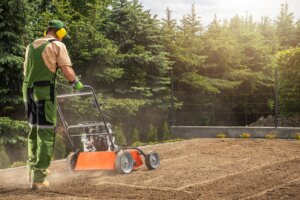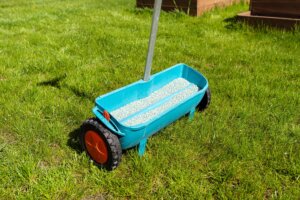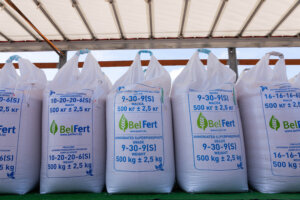Quick Answer: The optimal time to mow grass is mid-morning (8–10 a.m.), when dew has dried and temperatures are still cool. The second best time is late afternoon (4–6 p.m.). Mowing during these times helps your lawn recover faster and stay healthier. Avoid mowing early morning when the grass is wet, early afternoon during peak heat, or right after heavy rain.
Best Time of Day to Mow Your Lawn
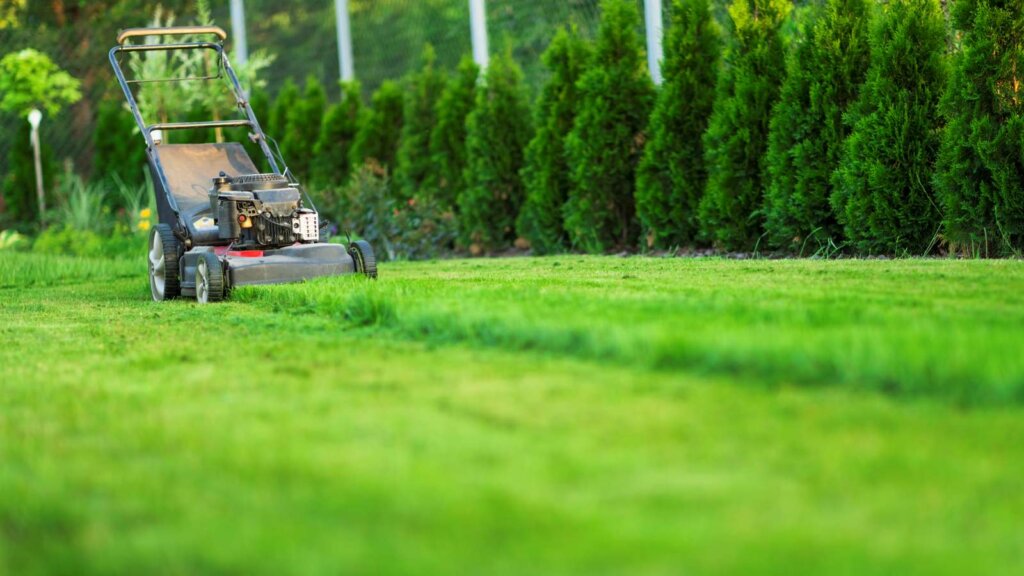
At Terra Lawn Care Specialists, we know from experience that the best time for lawn mowing is mid-morning, once the morning dew has lifted but before the day’s heat peaks. Cutting at this optimal time helps your grass get a clean cut without the stress of hot weather.
If mornings don’t fit your schedule, early evening — around 4–6 p.m. — is the second-best time. Evening mowing allows the turf to cool down from the hottest time of day while giving the grass enough time to heal before nightfall.
Times to avoid:
- Early morning (before 8 a.m.) – Wet grass from dew can cause uneven cuts and increase the risk of fungal infections.
- Early afternoon – The hottest time of the day, which can scorch grass and cause brown spots.
- After rain – Wet grass clumps, creates uneven cuts, and can clog your lawn mower.
Why Mowing Time Matters for Lawn Health
Choosing the right time to mow grass is about more than convenience — it’s about protecting your lawn’s health. Cutting when the grass is dry and temperatures are moderate lets mower blades slice cleanly instead of tearing. Torn blades can stress turf, lead to uneven cuts, and make it more susceptible to disease.
Mowing Height, Frequency, and Seasonal Adjustments
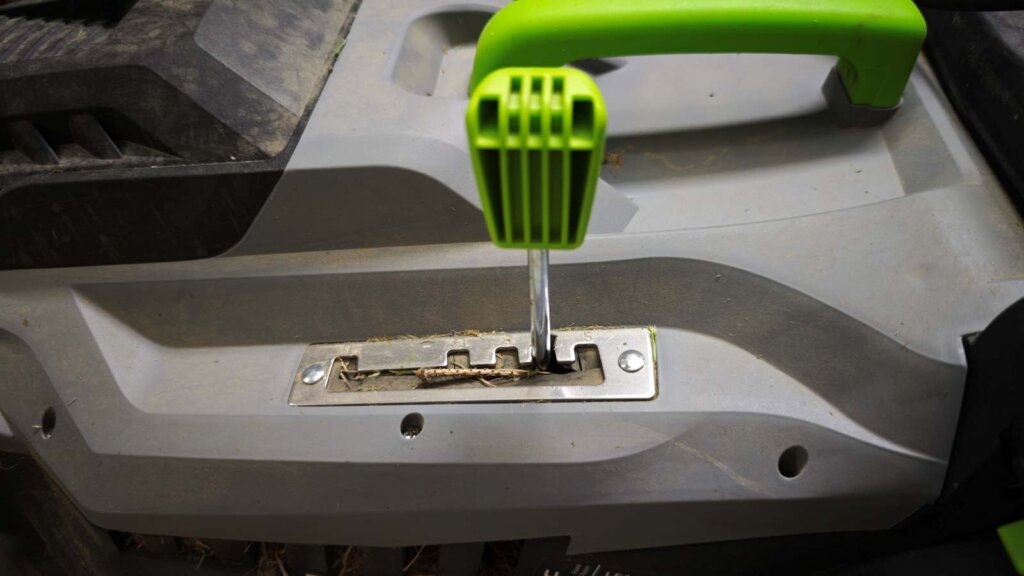
Keeping the right height, adjusting with the seasons, and mowing with sharp blades can transform a lawn’s health. Sharpen mower blades regularly to reduce jagged edges, conserve water, and prevent fungal infections.
Here are a few good rules to follow:
- Follow the “one-third rule” – Never cut more than the top third of the grass blade at one time.
- Keep grass at 3 inches or higher – Taller grass shades soil and suppresses weed growth.
- Raise mowing height in hot weather – Helps your lawn handle heat and dry spells.
- Lower slightly in fall – Prepares turf for winter while avoiding cutting too short.
Proper mowing height can reduce weeds and disease significantly, keeping your lawn healthier all season long.
Recommended Grass Heights by Season and Grass Type
| Grass Type | Ideal Mowing Height | Notes for Healthy Lawn Care |
|---|---|---|
| Cool Season Grasses (e.g., Kentucky bluegrass, fescue, ryegrass) | 3–3.5 inches | Provides shade for soil, helps retain moisture, reduces weeds. Raise height to 3.5–4 inches during hot summer weather. |
| Warm Season Grasses (e.g., Bermuda, zoysia, St. Augustine) | 2–2.5 inches | Keep blades slightly longer in drought to protect soil. Avoid cutting more than 1/3 of the blade length at one time. |
| Newly Seeded Lawns | 3–4 inches | Wait until grass reaches the upper end of the range before the first mow to avoid stress. |
Other Factors That Affect Mowing Success
- Grass clippings – Leaving clippings on the lawn is generally safe and can act as a natural fertilizer, as long as they’re not too long or clumped.
- Weather – Wait for a dry spell; avoid mowing in hot, wet, or extremely windy conditions.
- Noise – Consider your neighbors; loud noises early in the morning or late at night aren’t always welcome.
- Professional help – If you’re unsure about the best mowing schedule for your yard, a lawn care professional can tailor it to your turf’s needs.
Seasonal Lawn Care Timing in Pennsylvania
Our team adjusts mowing schedules for the seasons in Montgomery, Bucks, Berks, Delaware, and Chester counties:
- Spring – Mow grass weekly to keep up with fast growth.
- Summer – Start mowing during cooler hours to reduce heat stress.
- Fall – Continue mowing until growth stops, generally by late October.
- Winter – Rarely needed; let the lawn rest.
Terra’s Takeaway
For most people, mowing isn’t just about keeping the yard neat — it’s about protecting turf health. Choosing the optimal time, following the general rule of the one-third cut, and maintaining sharp mower blades will keep your lawn looking lush and green. Terra’s team knows how to time lawn mowing so your yard stays healthy week after week.
For expert lawn care across our Pennsylvania service area, trust Terra Lawn Care Specialists. We treat your property as if it were our own — from the first cut of spring to the final mow of fall.
For more ways to keep your yard looking its best, check out our lawn mowing tips.

